
The Falcon and the Flycatcher
Spring Migration on Monhegan Island, Maine
Here on Monhegan Island, a Peregrine falcon snatched a flycatcher from the skies and began to eat on the wing. That alone might have been enough to express to you a remarkable day on this outpost 10 miles out to sea off Maine’s midcoast. But before I get to that, I should mention a few things that happened before the flycatcher met the falcon.
First, I met a white spruce adorned with no fewer than: three male Scarlet Tanagers, three Baltimore Orioles (two males and a female), one Orchard Oriole (a year-old male), a Rose-breasted Grosbeak, and an American Goldfinch. That too would have been enough to describe my epic morning. But then a Yellow Warbler, about 20 feet away, launched to catch an insect about six feet from my face. (With insects and deciduous leaves not yet in abundance here on Monhegan, most of the warblers are flycatching.)
During spring migration, Monhegan declares to the skies: Give me your tired, your poor, your huddled masses yearning to fly north and breed. Accordingly, boatloads of Scarlet Tanagers, navigating by night, were among the beleaguered immigrants arriving Saturday morning. We’re still finding them at nearly every turn, many too tired to fly away from us (like that male above who dropped to the stump as I passed him by on Horn Hill). Along with them were a load of Gray Catbirds, which joined an infantry of Red-breasted Nuthatches (now the most abundant songbird on the island) marching along tree trunks and branches. It’s all rather routine on Monhegan this time of year.
So is a falcon snatching a flycatcher. All three of our eastern falcons are zooming around the island now. When I first spotted the Peregrine Falcon, with breakfast in her talons, floating overhead not far from Jaime Wyeth’s house, I alerted my pals Josh Lincoln and Bill Thompson, who promptly started shooting photos through their giant lenses. Hanging on a north wind above us, the falcon began to eat its prey, which you can see in Josh’s first pair of images. Seconds after I wondered aloud about the identity of her meal, the Peregrine proceeded to drop it, which you’ll see in Bill’s two images. Limp and lifeless, feathers and flesh weighing less than an ounce, the songbird floated gently to earth. Through my binoculars I tracked its descent.
Before it had met the falcon, this songbird had almost certainly flown all night, ending up off-course over the Atlantic here in the Gulf of Maine. Monhegan was to be its safe harbor. It perished instead not at sea but in the grip of a falcon’s talons, only to be released for reasons I cannot know. I located the songbird lying in a thicket beside a Green Alder. A Least Flycatcher, still warm.
This drama of life and death and migration here on Monhegan plays out in the sky and in large part in naked trees. As I’ve been writing all May, I’m enjoying the reluctant arrival of spring and its leaves — so that we may more easily see warblers. Monhegan, slow to leaf out, is in the Red Alert stage, with Red Maples just now in flower and the shad snowstorm yet to begin. Ruby-throated Hummingbirds are turning to Fly Honeysuckle (Lonicera canadensis) for nectar, with at least one trying out a dandelion. It feels like late April or early May out here.
Even so, in the sunshine yesterday, American Lady and Red Admiral butterflies, both migrants, were on the wing. Other avian highlights: Turkey Vulture (rare out here at sea), Blue-gray Gnatcatchers, a calling Catharus thrush that I swear was a Bicknell’s, and lots of Bobolinks in places we don’t usually see them — on the road, on stumps, on feeders, in spruces and in gardens.
The clouds and cold returned this morning. Many of the warblers departed last night. But even if I now cannot find warblers in every direction, Scarlet Tanagers are still posing on stumps. I’ve got a report of another Hooded Warbler to investigate. And tonight, during the finale of “Game of Thrones,” the winds are supposed to blow hard from south. Which means on Monday morning, once again, I might temporarily turn away from the world’s problems and find warblers in any direction. No dragons, please — maybe some dragonflies. I’ll leave you for now with a few more images of tired migrants.


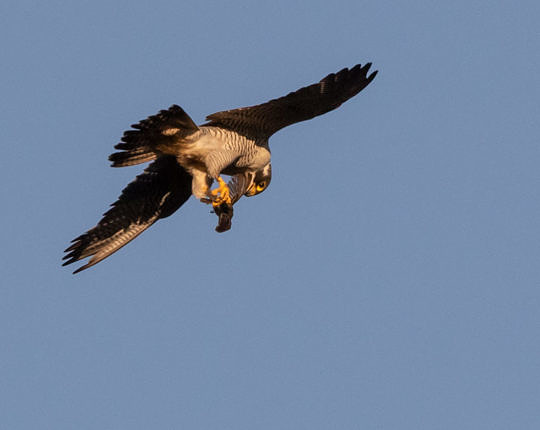
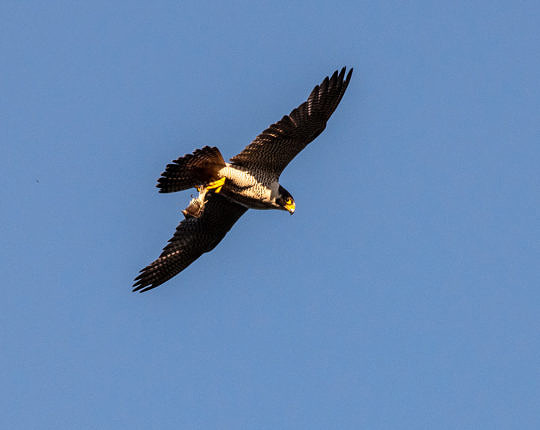
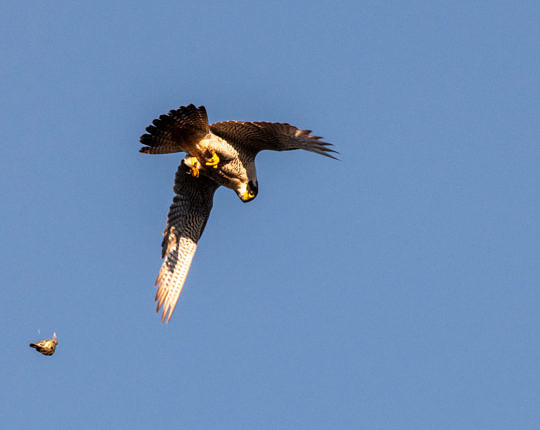



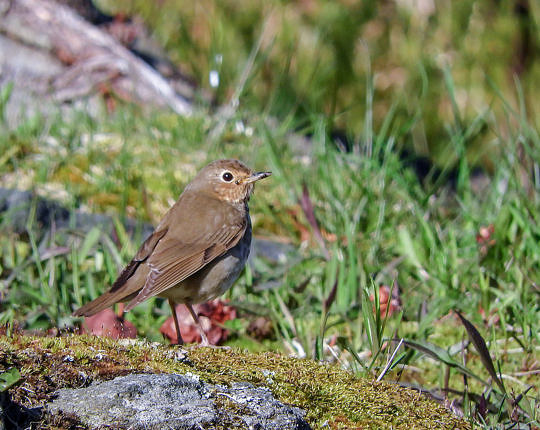
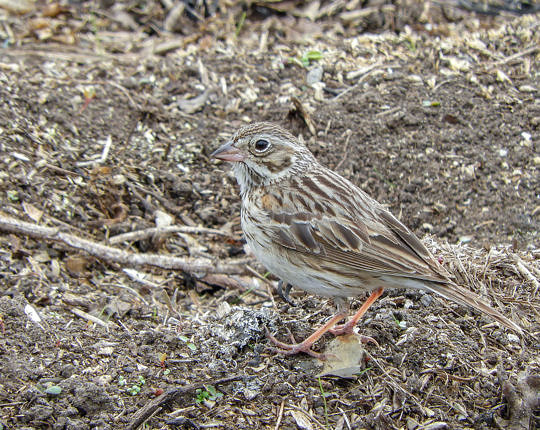

Thanks, Patricia! Yes, this was a New England event! We were due! 🙂
Thank you for offering such a gorgeous glimpse of beloved Mon’egan, and so glad you were there for a fallout! Here in another beloved place, Plum Island, it’s also been the best birding of a lifetime! The big 3 (so I’m told): Cape May, Bay Breasted,& Blackburnian all chilling branch-by-each snatching bugs…plus scads of Canada, Tennessee, Parula, the Black Throated brothers & sisters, Blackpolls, Flycatchers…It is truly heartening to see and hear.
Save some of it for me!!!! I’ll be home soon!
Eek! 🙂
And what a treat to share it with you, Joan, and the family for so many years!
See you two in the fall! (If not sooner, I hope.)
My days of guiding are over, Sharon. For 20 years it was a wonderful career. (Now I guide myself in new discoveries 🙂 ) But you’ll find other guides doing trips there — spring and fall.
You bet, Louanne. In fact, when they’re around, I basically don’t photograph birds. Actually, when the birding’s this good I don’t photograph at all. That will be a topic in my next post.
It’s among my most favorite places on Planet Earth.
It was an adult falcon — probably well-practiced in eating on the wing. But I suspect it might have been an accident. Guess these things happen. 🙂
Yes, I gather that migrants were all over New England last weekend!
Hope to see you in Austin!
Yes, but do falcons, like us, eat for pleasure or merely survival? 🙂
Thanks so much, Barbara. Yes, there irony in little struggling songbirds can bring us so much joy.
The migration continues unabated here in Calais, also. Yesterday morning was sunny and quite warm (back to 45 today) and the cacophony going on was almost deafening! From my usual morning perch on the back porch, with coffee, I saw or heard myrtles, northern parulas, black- throated greens (at literally an arms length away!) bt blues, yellows, phoebes, ovenbirds and a prairie, with a female turkey walking through the field gobbling every few yards—ah, spring!
Lovely recap, as always. (Although I first read that one sentence as “Many of the warblers were deported last night.”)
What a treat to share Monhegan in spring via your writing. Many thanks.
Wish we were there! Always wonderful writing and great pictures…
Especially the falcon feast…or not! Keep up with prose about life on the rock!
Bryan, next year a birding tour on Monhegan? I visited that special place one summer and recall the rocks, the artists, and of course the ocean. Such a lovely retreat.
Your writing is always entertaining, informative and inspiring. Thank you. However, I have to give Josh and Bill a significant amount of credit for capturing your story with photos.
Wow – your report makes me long to get to Monhegan in May – hope that was a Bicknell’s Thrush you saw!!!
Hi Bryan – Great article. I wonder why the Falcon let go of the Warbler?Sounds like a great place for birding.
It’s a feeding frenzy here at Lake Carmi in my yard. I’ve never had so many Baltimore Orioles, and Rose-breasted Grossbeaks, my first Scarlet Tanager here. Pine Sisken’s and Goldfinches, Warblers, along with many other species. Thanks for sharing.
Wonderful article–beautifully written.
Thank you, Bryan, for describing the beauty and
Wonder that you see. It does settle the soul in these
Trying times… and to not take nature for granted!
I particularly appreciated your bringing in the allegory of
Migrants and their trials. I am currently in coastal FL enjoying
Birding here. Safe and happy travels! Thanks again; Barbara, Warren VT.
LIke the falcon, the songbirds are very hungry; like the songbirds the insects are very hungry; like we are very hungry to see all the arrivals to the dinner table. Food web of life – a beauty to behold.
TY Bryan for inviting us to dinner!
In many ways, a migrant bird’s journey can be just as rough and tragic: arduous, with perils along the way, and sometimes with no actual destination because the habitat has been destroyed. (I might have to write on this.) Thanks, Joyce.
Thanks, Vicki. Very kind of you. I have to admit to a major incongruity in the state of the world and how fortunate I am to be enjoying nature out here — something, as it turns out, I’m exploring in more writing.
Your entertaining writing left me chuckling, Bryan. I hope those immigrants to Monhegan are faring better than those at our southern borders. I was sorry to hear about the flycatcher. I love those birds.
A pair made a nest in the corner of a lean-to at Ricker Pond last summer, and I’ve got some great photos of them feeding the 3 young.
I loved reading this, and the photos. Saddened about the swift demise of the flycatcher, but I understand. And I agree that with these times comes the need for such fodder for the soul that nature gifts us. Thank you for giving me mine with this beautifully written prose.
You’d love to shoot photos out here!
Yep, those tanagers should be showing up in our hardwoods — singing from the treetops like an American Robin with a sore throat! Thanks, Catherine! (Get good photos! :-))
Indeed it can!
Thanks, Sheri!
Sure, Karl. Email me a photo: .
Thanks, Pete. Hope you get out here again!
Must have been a lovely display above what I understand was a carpet of spring ephemerals! 🙂
The birders up in Craftsbury heard a pair of No. Parulas, spotted Blackburnian and a Chestnut-Sided warblers (one each).
Beautiful prose and photos
I love scarlet tanagers. We have only seen once up here on the hill.
My stepmom, Glenda, had a grouse or partridge smash through her double pane window at her house na die. Can i send you a few pictures to confirm what it is?
Wonderful story!
Nature can offer many unusual and exciting scenarios. What a great story!
Wonderful report from Monhegan! Poor flycatcher. What a rewarding white spruce. Good medicine for the soul in these trying times indeed. Please send some of those scarlets over to North Central Vermont. Just reading your dispatches lifts the spirits! Thank you!
Outstanding!